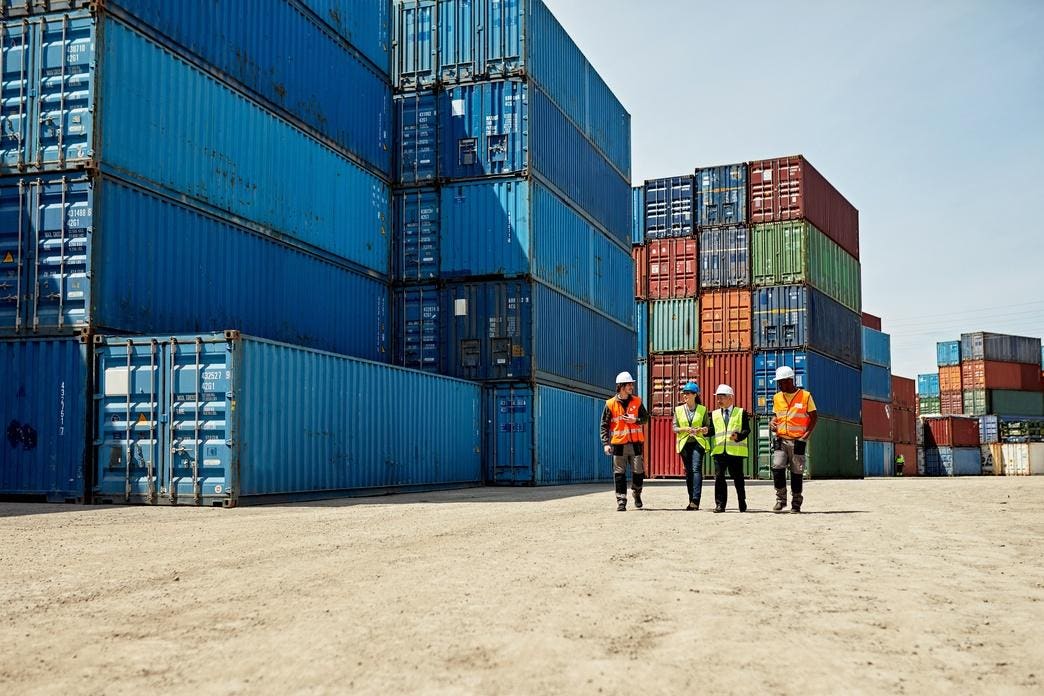Three assumptions drove the global supply chain: rational government policy, logistics availability, and low variability. During the last decade, these assumptions were valid. They are not now. As a result, it is a time to rethink supply chain flows.
As Q3 freight logistics traffic volume cools, risks and variability mount. While shippers are experiencing low shipping rates, to ensure resiliency, there is a need to think deeply about the long-term impacts.
Logistics is about planes, trains, and trucks moving together seamlessly to deliver goods and services on time and without issues. Coming off of post-pandemic highs in shipments and rates, the freight recession, coupled with the looming risks of ocean shipments compounds the need for global manufacturers to design their supply chains to manage variability and improve resiliency.
Since 1972, the U.S. freight industry has transitioned through 12 recessions: twice as many as the overall economy. This freight recession (forecasted to last 14-16 months to end in Q2 2024) has the potential to bring unprecedented instability to U.S. manufacturers.
A Couple of Words About Logistics
Logistics is all about the coordination of modes: planes, trains, and trucks moving together seamlessly to deliver goods and services on time, with a reliable price, and without issues. Coming off of post-pandemic highs in shipment volume and rates, the freight recession, coupled with the challenges of ocean freight, compounds the need for global manufacturers to design and constantly redesign their supply chains to manage variability and improve resiliency.
Today, only 9% of manufacturers actively design their supply chain flows, with most sourcing decisions driven by labor arbitrage strategies based on spreadsheet analysis. These myopic views hide the impact of variability of lead times on the supply chain, thereby increasing risk and reducing resiliency. While there is no commonly held definition for supply chain resiliency, for the purpose of this article, we define it as the company’s ability to deliver consistent balance sheet returns in the face of demand and supply variability.
Improving Supply Chain Resiliency
Let’s start the discussion by taking a look at the critical shifts in logistics:
- Freight Recession. Consecutive quarters of decline in freight volumes define a freight recession. In a freight recession, freight volumes and first-pass tender rejections are low due to overcapacity. Truckload carriers experience a margin decline and a decrease in fleet utilization. During 2020-2021, when capacity was down and prices were high, the assets freight brokerage company moved 20-25% of United States freight, with many investing in impressive software automation; in 2023, the market with tight margins, the number of interstate trucking fleets in the U.S. declined by nearly 9000 in the first quarter of 2023. Expect continued consolidation, restructuring, and redefinition. While shippers have low prices now, the risk of business continuity in shipping lanes is high.
- Suez Canal. Remember the Ever Given? On March 23, 2021, the 1,300-foot long, 200,000-metric ton mega ship ran aground, blocking the Suez Canal for six days. The disruption delayed the Ever Given’s arrival in Rotterdam by three months, but this was not the story. This disruption stalled over 400 ships, increasing lead times by 2-3 months. Roughly 12% of international cargo moves through the Suez Canal (22,000 vessels in 2022). The eruption of war in the Middle East is an impending global supply chain risk. The Houthi rebels in Yemen, along with the backlash of Hezbollah in Lebanon and Hamas in Palestine to Israel, threaten Suez Canal normalcy.
- Panama Canal. This month, due to a freshwater shortage, the Panama Canal Authority started new transit cuts, reducing the number of ocean vessels by 40%. Today, over one hundred ships wait to transit the canal. It usually takes 8-10 hours to move through the channel; however, with the wait times, weeks and months must be added to supply chain lead times. Annually, forty percent of all U.S. container traffic travels through the Panama Canal’s locks, representing the facilitation of $270 billion in trade. (The movement through the Panama Canal is approximately 5% of global trade). The water shortage is forecasted only to get worse.
Steps to Take
Global shippers have the opportunity to drive greater value for their organizations. Here are five steps to take:
- Design Supply Chain Flows. Align assets to improve reliability. Get good at network design. Move the network design modeling work from the logistics team to the board room. Engage in scenario planning. Analyze supply and demand variability data, model inventory buffer strategies and impacts from the freight recession.
- Be A Good Trading Partner. The supply chain should be a collaborative multi-tier process, but it is not. As logistics providers restructure, work with strategic partners to improve receivables, forecast future freight and be proactive in sensing joint opportunities.
- Align Planning to Leadtime Changes. Build a Planning Master Data Base. Track lead times and supply variability and use the output as an input for supply chain planning by lane. This is a good application for machine learning and narrow AI.
- Decrease Dependencies on the Canals. Focus on regional sourcing strategies with less movement through the canals. Use supplier development practices to build sourcing capabilities within the region.
- Redesign. Redesign. Redesign. This ride will be bumpy requiring continual work. Build sensing capabilities to connect the current supply chain planning processes without connection to planning master data and continual redesign.
Summary
Don’t take logistics for granted. While rates are low today, expect a bumpy road ahead.
Read the full article here





